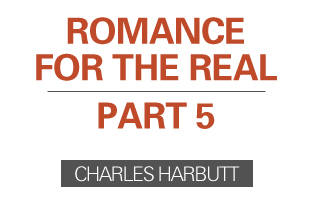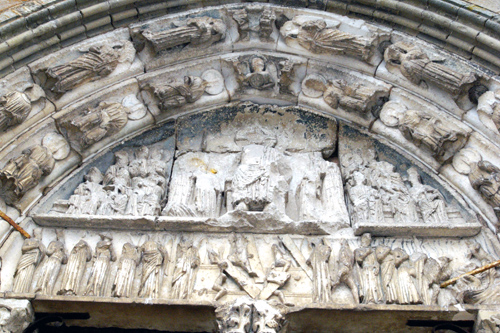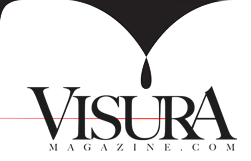
We declare, that we defend free from any innovations, all the written and unwritten
ecclesiastical traditions that have been entrusted to us.
 Christianity was of course the primary art motif in the Middle Ages. Like the Egyptians, the priests claimed to have figured out a system to achieve immortality, eternal life, which they controlled and whose verbal brains legislated the rules, but medieval class structure was a subtext, through the positioning of subjects. God was highest and frequently the largest figure in the frame, cardinals, saints and bishops were next, emperors and other believers next, especially the nobility and at the bottom came the serfs and sinners, often tiny. Art’s purpose was to teach religion’ as Pope Saint Gregory said: The picture is to the illiterate what the written word is to the educated. A detailed list of symbols was promulgated to which artists had to conform. There could no longer be any reference to anything actual because neither the artists nor the image police had ever seen the events being portrayed.
Christianity was of course the primary art motif in the Middle Ages. Like the Egyptians, the priests claimed to have figured out a system to achieve immortality, eternal life, which they controlled and whose verbal brains legislated the rules, but medieval class structure was a subtext, through the positioning of subjects. God was highest and frequently the largest figure in the frame, cardinals, saints and bishops were next, emperors and other believers next, especially the nobility and at the bottom came the serfs and sinners, often tiny. Art’s purpose was to teach religion’ as Pope Saint Gregory said: The picture is to the illiterate what the written word is to the educated. A detailed list of symbols was promulgated to which artists had to conform. There could no longer be any reference to anything actual because neither the artists nor the image police had ever seen the events being portrayed.
 The tradition of death masks continued: Dante Aligheri is at left. There was also a strong resurrection of interest in historic objects: a rag, a bone, a hank of hair, a splinter from the True Cross were enshrined in church sanctuaries, in elaborately crafted reliquaries. Some such relics were claimed to have miraculous powers; many came to be worshipped in themselves. One photographic image made by something in the actual world is the Shroud of Turin, a burial shroud that retains an image of a corpse, some claim to be the Christ’s.
The tradition of death masks continued: Dante Aligheri is at left. There was also a strong resurrection of interest in historic objects: a rag, a bone, a hank of hair, a splinter from the True Cross were enshrined in church sanctuaries, in elaborately crafted reliquaries. Some such relics were claimed to have miraculous powers; many came to be worshipped in themselves. One photographic image made by something in the actual world is the Shroud of Turin, a burial shroud that retains an image of a corpse, some claim to be the Christ’s.
Church and state had joined ranks in the Holy Roman Empire, which stretched from Scotland to the Middle East. But in the eighth century, the rise of the Muslim world brought the Koran’s adoption of Moses’ prohibition of graven images and in 726, the Byzantine emperor Leo III banned the use of images in Christian churches. The thought was that too many people had started to believe that the paintings and statues had their own powers and prayed to them for favors.
In a classic example of the neomammalian and conservative verbal brain exercising its drive to control the paleomammalian, visual brain, the Second Council of Nicaea in 747 nullified Moses first commandment, You shall not make for yourself an image, whether in the form of anything that is in heaven above, or that is on the earth beneath, or that is in the water under the earth.
We declare, that we defend free from any innovations, all the written and unwritten ecclesiastical traditions that have been entrusted to us.
One of these is the production of representational art; this is quite in harmony with the history of the spread of the gospel, as it provides confirmation that the becoming man of the Word of God was real and not just imaginary, and as it brings us a similar benefit. For, things that mutually illustrate one another undoubtedly possess one another’s message….
Therefore all those who dare to think or teach anything different, or who follow the accursed heretics in rejecting ecclesiastical traditions, or who devise innovations, or who spurn anything entrusted to the church (whether it be the gospel or the figure of the cross or any example of representational art or any martyr’s holy relic), or who fabricate perverted and evil prejudices against cherishing any of the lawful traditions of the catholic church, or who secularize the sacred objects and saintly monasteries, we order that they be suspended if they are bishops or clerics, and excommunicated if they are monks or lay people.
 The power struggle had political and economic repercussions and the controversy resulted in the split of the two churches. It was the end of realism in Muslim art and the beginning of absolute control by the Church over European painting: down to tiniest details like the prescription of how the folds of a particular saint’s clothing must fall. This formalized the Greek notion that the Church/State (eventually the Academy) should control image-making and that art had a socio/religious purpose. It was not just for pleasure but to move the emotions to embrace religious belief. But of course, it still addressed the issue of eternity, of life after death and attempted to use highly controlled realistic images to “prove” its thesis and underline its power.
The power struggle had political and economic repercussions and the controversy resulted in the split of the two churches. It was the end of realism in Muslim art and the beginning of absolute control by the Church over European painting: down to tiniest details like the prescription of how the folds of a particular saint’s clothing must fall. This formalized the Greek notion that the Church/State (eventually the Academy) should control image-making and that art had a socio/religious purpose. It was not just for pleasure but to move the emotions to embrace religious belief. But of course, it still addressed the issue of eternity, of life after death and attempted to use highly controlled realistic images to “prove” its thesis and underline its power.
When the French Revolution came along people showed the churched where power now resided by loping off the heads of the saintly aristocrats.
In China, a different approach to making images was formulated during the Yuan Dynasty, the rign of Kublai Khan, Ghenghis Khan’s grandson, 1271-1368, stressing a paleomammalian, emotional approach. Chueh Yin, Buddhist monk of the Yuan period, said: `When the emotions are strong’ and one feels pent up, one should paint bamboo – in a light mood one should paint the orchid, for the leaves of the orchid grow as though they were flying or fluttcring., the buds open joyfully, and the mood is indeed a happy one.’
E. H. Gombrich adds: There is nothing in Western art which compares with this conception of painting.
The good news was that Medieval alchemists searching to transmute lead into gold, found instead that “gold-dripping sunlight” darkened certain salts, a discovery at the heart of photochemistry.
www.actualityinc.com





